#Fujifilm GFX 100 II
Explore tagged Tumblr posts
Text
Three Golds In The 2024 European Photography Awards
Alongside Seven Honourable Mentions Absolutely overjoyed to share some great news from today! The International Awards Associate (IAA), in unison with the European Photography Awards, have selected three of my photographs as Gold winners and seven other images as recipients of Honourable Mentions. From the press release of the European Photography Awards; “Drawing an impressive number of…

View On WordPress
#award#commercial photography#competition#edmond terakopian#European Photography Awards#fujifilm#Fujifilm gfx 100 ii#gfx#leica#lumix#macro#product photography
0 notes
Text
Will there ever be a successor to the Lumix GX8 or has Panasonic now nailed its flag to the DSLR-style mast? And more...

View On WordPress
#DxOFilmPack#DxOFilmPackElite#DxOPhotoLab#DxOPhotoLabElite#DxOViewPoint#@DxOLabs#@FujifilmEMEA#@fujifilmfrance#@FujifilmUK#@FujifilmX_AU#@FujifilmX_US#@FUJIFILM_UK#@FUJINONLenses#@nikcollection#DeepPRIME XD#DxO#FHoP#Fujifilm#Fujifilm GFX 100 II#Fujifilm House of Photography#Fujinon#Panasonic Lumix DMC-GX8#Panasonic Lumix GX8#Rolleiflex Twin-Lens Reflex cameras
0 notes
Text
Fujifilm GFX 100S II Review: Is Fujifilm the New Pentax?
Fujifilm has said many times that they will never get into full frame. So instead, they’ve pushed APS-C and full-frame cameras. This is a strategy that Pentax did for many years until they finally caved. The Fujifilm GFX 100S II is one of those cameras that Fuji positions to replace your full-frame camera. It’s targeted squarely at the image quality and with some of the extra features which can…
#autofocus#birds#ease of use#fujifilm#fujifilm gfx 100s ii#GFX#gfx 100s ii#image quality#people#Reala Ace
0 notes
Text
Fujifilm готовит анонс GFX100S II?
Cледующей новой камерой со сменной оптикой, кот... Читать дальше »
0 notes
Text
Price: [price_with_discount] (as of [price_update_date] - Details) [ad_1] Product Description *Compatibility Camera Brand & Model List* WARM REMINDER FeiyuTech has achieved most control functions. But some of the control functions might be blocked by the camera brand due to not all the camera protocol is open source. SONY RX100 Ⅲ (RX100M3) / RX100 Ⅳ (RX100M4) / RX100M5A / RX100 Ⅵ (RX100M6) / RX100 Ⅶ (RX100M7) / ZV-1 / DSC-WX500 / DSC-HX90 / DSC-RX10 Ⅲ / DSC-RX10 Ⅳ / ZV-E10 / a6100 / a6300 / a6400 / a6500 / a6600 / Α7S / A7S II / A7R / A7R II / A7R III / A7R IV / a7R M4A / a7 Ⅱ (A7M2) / a7 Ⅲ (A7M3) / a9 / a9 II / A7C / a1 / a7S III / FX3 / a7 Ⅳ(A7M4)/ A7RM 4 / FDR-AX60 / FDR-AX700 Nikon Z7 / Z7 II / Z6 / Z6 Ⅱ / Z5 / Z50 / Z30 / D7500 / D850 / Z fc Panasonic GH5S / GH5 / GH4 / G9 / S5 / GH6 Fujifilm X-T20 / X-T30 / X-A5 / X-A7 / X-T100 / X-H1 / X-T3 / X-T4 / X-E3 / X-S10 (Type-C to TRS3.5) / X-T200 (Type-C to TRS3.5) / X-T30 II / X100V / GFX 100S / X-H2S Canon EOS M50 / EOS M50 Mark II / EOS M6 Mark II / Powershot G7 X Mark III / EOS 200D II (250D) / EOS 850D / EOS 80D (Tpye-c to mini) / EOS 90D / EOS 6D (Tpye-c to mini) / EOS 6D Mark II (Tpye-c to mini) / EOS 5D Mark III (Tpye-c to mini) / EOS 5D Mark IV / EOS 5DS R / EOS RP / EOS R / EOS R5 / EOS R6 / EOS R5C / EOS R7 / EOS R10 Sigma FP ( Only use the Start/ Stop Recording Video ) INNOVATIVE DESIGN,MAKES FILMING MORE COMFORTABLE Tilted handle holding Extremely comfortable to hold thanks to beveled edges, smooth rounded ergonomics to perfectly fit your hand. Integrated gimbal handle arm Whether shooting upright or underslung, get complete control of the lens from whichever angle you are filming. Set it down anywhere No tripod required, the gimbal is complete with an integral folding aileron bracket. Caution: Gimbal Stabilizer Compatibility here has 2 senses: (1). Camera can be well balanced in the gimbal stabilizer to prevent unwanted movements like camera shaky. In this dimension, ensure the camera with lens size and weight is within gimbal balance standard. If camera is balanced, you can realize the stabilization features like different working mode, inception mode, selfie mode, portrait mode, timelapse, etc; (2). Control some camera features from gimbal stabilizer like snapshot, record video, zoom, follow focus and camera parameters via cable. You can refer to the details below. Unlock the motor: SCORP C has a three-axis lock. Before installing the camera, you can unfold each axis and lock the motor lock to assist in installing the camera. After the installation is complete, the three-axis motor lock must be unlocked and the center of gravity must be leveled, and then turn on the machine.
(3). SCORP C main body is Aluminum Alloys and Plastic. Arca Quick Release Plate Arca-Swiss quick release plate- slide the plate without having to worry about mounting or dismounting anythingThe clamp can be fully opened, allowing the plate to be dropped in and securedOr can be partially opened to allow the plate to be slid into the position Upgraded Battery Capacity 2500mah Efficient Battery10-13 Hour maximum runtime (Official-tested data, it also related to different factors, like the weight of camera&lens; the camera well-balanced or not )USB-C port, support all the normal charger and quick charger which charging power≤18W An Integrated handle grip gimbal. *Please do not use it for balance mounting camera*Extremely comfortable smooth rounded ergonomics to perfectly fit your handWhether shooting upright or underslung, get complete control of the lens from whichever angle you are filmingAn integral folding aileron bracket for temporarily setting down the gimbal (no tripod-use scene) Add to Cart Add to Cart Customer Reviews 4.2 out of 5 stars 279 3.8 out of 5 stars 90 Price ₹19,990.00₹19,990.00 ₹18,990.00₹18,990.00 Supported Devices
DSLR & Mirrorless Camera Mirrorless Camera & Pocket Camera & Smartphone & Action Camera Weight / Payload 2.65 lb / 5.51 lb 1.735 lb / 2.65 lb Quick release/Balancing structure Quick release plate compatible with ARCA quick release system and Memory Slider dot Quick release plate compatible with ARCA quick release system Interactive interface 1.All physical button designed, quickly operate 2.Only part of parameter setting can be completed, which requires the cooperation of App 1. 1.3-inch color OLED touch screen 2. All parameters can be set without App A-B point memory button A-B point memory, one button to achieve movements your set or automatic focus Not support Difference Between SCORP C and AK2000C (AK series gimbal stabilizer) Feiyutech SCORP C is the Simple Version for Amateur, which focuses more on the people who love shooting simply with a DSLR Mirrorless Camera.Compared to AK2000C, SCORP C did not removed the Magic Knob Button, it can control the camera/gimbal on different shooting scenesAK2000C's Underslung handle grip is an optional accessory, but SCORP series camera gimbal is an Integrated handle grip gimbal.Another most different feature is that the SCORP series conforms to ergonomic design and its exterior looks like a scorpion. Batteries : 1 Lithium Polymer batteries required. (included) Product Dimensions : 28 x 27 x 7 cm; 1.2 kg Date First Available : 9 April 2022 Manufacturer : Guilin FeiYu Technology Incorporated Company ASIN : B09TVKH9CV Item model number : Feiyu-F2C Country of Origin : China Manufacturer : Guilin FeiYu Technology Incorporated Company, Guilin, 541004, China. Packer : HKD E RETAIL PRIVATE LIMITED, [email protected], +91 7021527506 Importer :
HKD E RETAIL PRIVATE LIMITED, [email protected], +91 7021527506 Item Weight : 1 kg 200 g Item Dimensions LxWxH : 28 x 27 x 7 Centimeters Net Quantity : 1 Piece Included Components : MAIN BODY, TYPE-C TO TYPE-C, TYPE-C TO TRS2.5, TYPE-C TO 2.5MM PANASONIC SHUTTER CABLE, TYPE-C TO MICRO(A03), TYPE-C TO MULTI SONY SHUTTER CABLE, USB 2.0 TO TYPE-C, TRIPOD, QUICK RELEASE PLATE, LENS HOLDER SCREW, LENS HOLDER, CAMERA BACKING BASE, CAMERA FIXED SCREW*3, Generic Name : Camera Stabilizer 【Feiyu SCORP-C】Compatible with mainstream mirrorless and DSLR camera & lens combos . New upgraded version instead of AK2000C (AK series gimbal stabilizer) 【MAGIC KNOB RING】Control camera focus and gimbal axis on different shooting scenes 【INTEGRATED HANDLE GRIP】 Canceled Underslung handle grip AS an optional accessory, ALL SCORP series camera gimbal is an Integrated handle grip gimbal. 【UPGRADED PAYLOAD】For compatible more cameras, max payload from 4.85 lbs(AK2000C) upgraded to 5.51 lbs. [ad_2]
0 notes
Text
Best Camera for Wide Angle Shots: Top Picks and Features
For capturing expansive scenes, landscapes, and architecture, choosing the best camera for wide angle shots is crucial. The right camera, combined with a suitable wide angle lens, will enable you to capture more of the scene, maintain sharpness, and minimize distortion.
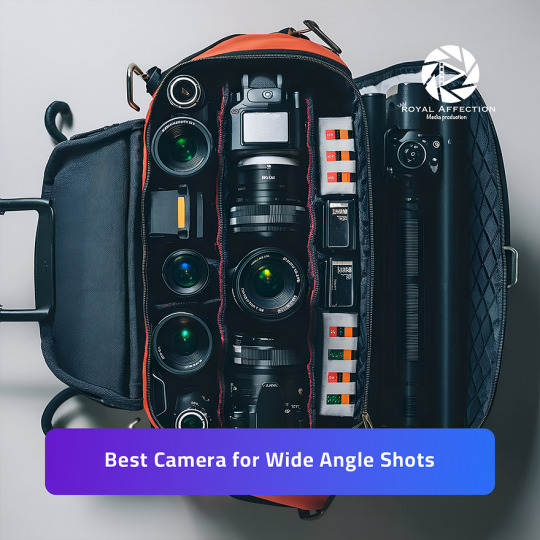
Why Choose a Camera Designed for Wide Angle Shots?
Wide angle photography excels in scenarios where you want to capture a large portion of the scene within a single frame. This can include everything from vast landscapes and cityscapes to tight indoor spaces. The benefits of using a dedicated camera for wide angle shots include:
Broader Field of View: Wide angle lenses allow you to capture a larger portion of the scene without moving farther back.
Creative Perspectives: Wide angle lenses create unique perspectives that exaggerate depth, making scenes appear more immersive.
Minimized Distortion: Cameras designed for wide angle shots often come with lenses that have advanced optics, reducing common wide angle distortions like barrel distortion.
Top Cameras for Wide Angle Shots
Here’s a look at some of the best cameras for wide angle photography, considering sensor quality, lens compatibility, and overall performance:
1. Canon EOS R5
Sensor: 45MP Full-frame CMOS
Features: 8K video, 5-axis in-body image stabilization, high-resolution electronic viewfinder.
Best Paired Lens: Canon RF 15–35mm f/2.8L IS USM
Why It’s Great: The high resolution and excellent dynamic range make it ideal for detailed wide angle shots, while the in-body stabilization ensures sharp images.
2. Sony Alpha a7R IV
Sensor: 61MP Full-frame
Features: 15-stop dynamic range, real-time eye autofocus, and a weather-sealed body.
Best Paired Lens: Sony FE 16–35mm f/2.8 GM
Why It’s Great: Its high megapixel count allows for stunningly detailed images, and it’s a great option for both landscape and architectural photography.
3. Nikon Z7 II
Sensor: 45.7MP Full-frame
Features: Dual EXPEED 6 image processors, 4K UHD video recording, 5-axis in-body stabilization.
Best Paired Lens: Nikon Z 14–30mm f/4 S
Why It’s Great: The Z7 II’s lightweight build and superb lens selection make it a versatile option for capturing expansive scenes.
4. Fujifilm GFX 100S
Sensor: 102MP Medium-format
Features: 16-bit color depth, large dynamic range, and in-body stabilization.
Best Paired Lens: Fujinon GF 23mm f/4 R LM WR
Why It’s Great: The GFX 100S delivers exceptional image quality, making it perfect for professionals looking for top-tier medium-format performance in wide angle shots.
5. Panasonic Lumix S1R
Sensor: 47.3MP Full-frame
Features: Dual image stabilization, high-resolution mode for 187MP images, rugged and weather-sealed body.
Best Paired Lens: Lumix S Pro 16–35mm f/4
Why It’s Great: The camera’s advanced stabilization and high resolution are perfect for capturing stunning detail in wide angle shots, making it an excellent choice for landscape and architecture photographers.
What to Look for in the Best Camera for Wide Angle Shots
When choosing a camera for wide angle shots, consider these key factors:
Sensor Size: Full-frame sensors offer a wider field of view and better image quality, making them ideal for wide angle photography. However, crop sensors can also perform well if paired with the right lenses.
Lens Compatibility: Choose a camera that offers compatibility with high-quality wide angle lenses. Focal lengths between 10mm and 35mm are ideal for wide angle shots.
Image Stabilization: Built-in image stabilization helps to reduce camera shake, ensuring sharp images, especially when shooting handheld.
Autofocus Performance: Fast and accurate autofocus is essential for capturing wide angle shots, especially in dynamic environments.
Dynamic Range and Resolution: A higher dynamic range helps capture more detail in shadows and highlights, while a higher resolution allows for sharper images.
Conclusion
Choosing the best camera for wide angle shots involves considering factors like sensor size, lens compatibility, image stabilization, and resolution. From the Canon EOS R5 to the Fujifilm GFX 100S, the options listed above offer excellent performance and features for capturing expansive scenes with exceptional clarity.
Ready to capture breathtaking wide views? Contact a photography expert or visit a camera store to explore these models and find the best one for your photography needs.
🔗Read More: https://royalaffectionmedia.com/best-camera-for-wide-angle-shots/
0 notes
Text
Fujifilm GFX 100S Mark II vs. Fujifilm GFX 100 Mark II: Medium Format Mirrorless Camera Comparison
Features
Fujifilm GFX 100S Mark II
Sensor: 102MP Medium Format CMOS sensor
Processor: X-Processor 4
Image Stabilization: 5-axis in-body stabilization (up to 6 stops)
Autofocus: 425-point phase detection AF
Video: 4K/30p video recording
Viewfinder: 3.69M-dot electronic viewfinder
LCD: 3.2-inch 2.36M-dot tilting touchscreen LCD
Build: Weather-sealed body
Weight: Approximately 900g
Battery: NP-W235 battery with improved battery life
Fujifilm GFX 100 Mark II
Sensor: 102MP Medium Format CMOS sensor
Processor: X-Processor 4
Image Stabilization: 5-axis in-body stabilization (up to 5.5 stops)
Autofocus: 425-point phase detection AF with improved performance
Video: 4K/30p video recording
Viewfinder: 5.76M-dot detachable electronic viewfinder
LCD: 3.2-inch 2.36M-dot tilting touchscreen LCD
Build: Magnesium alloy body with enhanced weather sealing
Weight: Approximately 1400g
Battery: Dual NP-T125 batteries for extended use
Differences
Size and Weight:
GFX 100S Mark II: Lighter and more compact at 900g, making it more portable.
GFX 100 Mark II: Heavier at 1400g, offering a more robust build.
Viewfinder:
GFX 100S Mark II: Fixed 3.69M-dot electronic viewfinder.
GFX 100 Mark II: Detachable 5.76M-dot electronic viewfinder, allowing for more flexibility.
Battery:
GFX 100S Mark II: Single NP-W235 battery.
GFX 100 Mark II: Dual NP-T125 batteries for longer shooting sessions.
Build and Durability:
GFX 100S Mark II: Weather-sealed body.
GFX 100 Mark II: Magnesium alloy body with enhanced weather sealing, providing better durability.
Conclusion
Both the Fujifilm GFX 100S Mark II and the Fujifilm GFX 100 Mark II are exceptional medium format mirrorless cameras, each with its strengths. The GFX 100S Mark II is ideal for photographers who prioritize portability and ease of use, while still offering top-tier image quality and performance. On the other hand, the GFX 100 Mark II is better suited for those who need a more robust, professional-grade camera with extended battery life and a superior viewfinder.
Recommendation: If you need a more portable and lightweight option, the GFX 100S Mark II is the way to go. For extended shoots and a more durable build, the GFX 100 Mark II would be the better choice.
Interested in renting one of these amazing cameras? Visit Scheimpflug - Camera Rentals to explore our rental options for the Fujifilm GFX 100S Mark II and Fujifilm GFX 100 Mark II.
1 note
·
View note
Text
Best Cameras to Rent for Different Types of Photography

Photography is an art that requires the right equipment to capture the perfect shot. Whether you are a professional photographer, an enthusiast, or a beginner, renting a camera can be a cost-effective way to access top-tier equipment tailored to your specific needs. Camera rental services offer a wide range of cameras suitable for various types of photography. This article explores the best cameras to rent for different photography genres, helping you make an informed decision for your next project.
Portrait Photography
For portrait photography, a camera with excellent image quality, accurate color reproduction, and good low-light performance is essential. The Canon EOS R5 is an excellent choice for portrait photographers. It features a 45-megapixel full-frame sensor, impressive autofocus capabilities, and high dynamic range, which ensures stunning detail and clarity in portraits. Additionally, the camera's Eye Detection AF makes it easier to capture sharp images of your subjects.
Landscape Photography
Landscape photographers need a camera with high resolution, wide dynamic range, and robust weather sealing to withstand harsh outdoor conditions. The Nikon Z7 II fits the bill perfectly. With its 45.7-megapixel full-frame sensor and exceptional dynamic range, this camera captures intricate details and vibrant colors. Its weather-sealed body ensures reliability in challenging environments, making it an ideal choice for capturing breathtaking landscapes.
Sports and Action Photography
Sports and action photography demand a camera with fast autofocus, high burst rates, and excellent tracking capabilities. The Sony Alpha A9 II is a top contender in this category. It boasts a 24.2-megapixel full-frame sensor, 20 frames per second continuous shooting, and advanced autofocus with real-time tracking. These features make it perfect for capturing fast-moving subjects with precision and clarity.
Wildlife Photography
Wildlife photography requires a camera with a powerful zoom, fast autofocus, and good low-light performance to capture animals in their natural habitat. The Canon EOS-1D X Mark III is a great choice for wildlife photographers. It offers a 20.1-megapixel full-frame sensor, 16 frames per second continuous shooting, and an impressive autofocus system. Additionally, its rugged build and weather sealing make it suitable for harsh outdoor conditions.
Macro Photography
Macro photography involves capturing close-up shots of small subjects, requiring a camera with high resolution and excellent focusing capabilities. The Fujifilm GFX 100 is a fantastic option for macro photographers. With its 102-megapixel medium format sensor and advanced autofocus system, it delivers exceptional detail and sharpness. The camera's high resolution allows for significant cropping while maintaining image quality, making it ideal for capturing tiny subjects.
Street Photography
Street photography calls for a compact, discreet camera with fast autofocus and excellent image quality. The Sony RX1R II is a perfect match for this genre. It features a 42.4-megapixel full-frame sensor in a compact body, making it easy to carry around. The camera's fast autofocus and silent shutter ensure you can capture candid moments without drawing attention.
Wedding Photography
Wedding photography demands a camera with high resolution, excellent low-light performance, and reliable autofocus to capture every special moment. The Nikon D850 is a popular choice among wedding photographers. It offers a 45.7-megapixel full-frame sensor, impressive dynamic range, and outstanding low-light capabilities. The camera's robust build and dual memory card slots provide reliability and flexibility during long shooting sessions.
Travel Photography
For travel photography, a lightweight, versatile camera with good image quality and battery life is essential. The Olympus OM-D E-M1 Mark III is an excellent option for travelers. It features a 20.4-megapixel Micro Four Thirds sensor, in-body image stabilization, and a weather-sealed body. Its compact size and lightweight design make it easy to carry, while the high-resolution sensor ensures stunning travel photos.
Conclusion
Renting a camera allows photographers to access high-quality equipment without the financial commitment of purchasing. Whether you are capturing portraits, landscapes, sports, wildlife, macro, street, wedding, or travel photos, there is a camera rental option tailored to your needs. By choosing the right camera for your specific photography genre, you can enhance your skills and capture stunning images. Explore camera rental services to find the perfect camera for your next project and elevate your photography to new heights.
0 notes
Photo
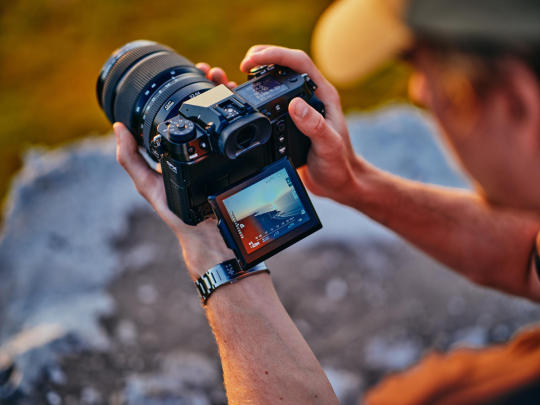
La GFX 100S II de fotograma medio de Fujifilm es más ligera, más barata y está mejorada con IA El sucesor de Fujifilm de la GFX 100... https://ujjina.com/la-gfx-100s-ii-de-fotograma-medio-de-fujifilm-es-mas-ligera-mas-barata-y-esta-mejorada-con-ia/?feed_id=627901&_unique_id=6645c658948b9
0 notes
Text
Fujifilm GFX 100 II hands-on: Digital Photography Review
See on Scoop.it - Amateur Photographer
Fujifilm's newest camera aims to bring modern AF, improved sensor stabilization and video recording technology into the medium format realm. Let's take a closer look at the GFX 100 II and everything it has to offer.
0 notes
Text
For these hardy Pentaxians who've weathered the storm for a very long time with their trusty Pentax 645Z medium format digicam, there is perhaps some mild on the finish of the tunnel in the case of a long-awaited successor. Whereas Pentax cannot determine which lenses will probably be renewed, what we do know is that if a Pentax 645Z (opens in new tab)-beater will get constructed it will not be a mirrorless digicam.• Among the greatest medium format cameras (opens in new tab) aren't truly mirrorless! This slightly curious information would not comes from rumors, however truly comes straight from Pentax itself through an interview in Japanese Cameraman journal (by the use of a report (opens in new tab) by Pentax Rumors).Apparently Pentax is presently contemplating new sensors for the subsequent 645 digicam, however it doesn’t have something particular to say concerning the alternative at this stage – aside from suggesting that, if it exceeds the present 50MP sensor, it would put older 645 FA lenses into query, as a result of their capability to work with larger decision sensors.(Picture credit score: Future)By these feedback, it is apparent that Pentax has not reached the testing stage at the moment – or it's retaining its playing cards near the chest, as testing may need discovered points.The panel continued to say that, "The present 645Z is extraordinarily good worth– it will not be doable to come back out with one thing on the identical worth now." Which might be fairly an understatement, as I'm positive everyone knows costs have gone up loads. At present the Pentax 645Z with the 75mm f/2.8 package lens at B&H (opens in new tab) or Adorama (opens in new tab) is priced at $3,996.95 – that is an incredible $3,000 off! The offers proceed within the UK the place digicam shops comparable to Wex (opens in new tab) or Park Cameras have the 645Z + 55mm f/2.8 (opens in new tab) listed for simply £4,999 – which is £1,500 off.There is no such thing as a arguing that even immediately this 50MP digicam is greater than able to producing excellent pictures – and being the primary weather-sealed medium format digicam to market that championed taking the studio outdoor, the costs above are actually a superb deal. So what's Pentax going to do to up the ante?(Picture credit score: Future)Going mirrorless is the apparent possibility, though according to Pentax' ongoing technique this isn't going to occur."It could be unfair to the individuals who had gathered their current lenses," stated the panel. And, when it was instructed that an adapter would resolve this, "Sure, however there can be an expectation that they'd come out with an entire set of recent lenses, which might not be reasonable for a few years."So, is the Pentax 645Z a sitting duck? I do not assume so. There are lots of loyal Pentax homeowners who swear by the 645Z, and even the older 645D; the techniques have an enormous quantity of AF lenses, with the FA and FA* lineup, and likewise the older guide focus lenses from the 120 movie (opens in new tab)days. So there may be nonetheless loads of life left within the system.(Picture credit score: Pentax)However we won't additionally ignore that point strikes on – now extra rapidly than ever – as evidenced by the likes of the Fujifilm GFX 50S II (opens in new tab) or Fujifilm GFX 100S (opens in new tab) with their wonderful trendy mirrorless specs, wonderful picture high quality, and a pretty price ticket to match.Will Pentax be capable to compete with a non-mirrorless digicam, in a now mirrorless market? It'll all come all the way down to prices, however there are many medium format backs on the market which have as much as 80 and 100 megapixels which are able to getting used with mirror-mechanical cameras. So it is definitely not over till it is over…Immediately's greatest Pentax 645Z offersIf this text has been of curiosity to you, why not check out our Pentax 645Z evaluate (opens in new tab) or take a look at our listing of the highest-megapixel cameras on the earth (opens in new tab).
#Pentax #talks #645Z #medium #format #successor #wont #mirrorless
0 notes
Text
HND1 Photography Report Task: Capture & Output
DIGITAL CAMERA SENSORS A digital camera uses an array of millions of tiny light cavities or "photosites" to record an image. When you press your camera's shutter button and the exposure begins, each of these is uncovered to collect photons and store those as an electrical signal. Once the exposure finishes, the camera closes each of these photosites, and then tries to assess how many photons fell into each cavity by measuring the strength of the electrical signal. The signals are then quantified as digital values, with a precision that is determined by the bit depth. The resulting precision may then be reduced again depending on which file format is being recorded (0 - 255 for an 8-bit JPEG file).
Digital Camera Sensor Types Medium Format Medium format is the largest sensor type in digital cameras for photographic applications. However, it doesn’t come in just one size. Medium format has its own group of sensors, with its own equivalents to the four thirds, APS-C, and full-frame formats. There are a variety of sensor sizes for medium-format cameras, and typical sizes range from around 43.8×32.9mm to 53.7×40.2mm.
Due to their large image sensors, medium-format DSLR cameras are traditionally heavier and bulkier than their full-frame counterparts. But that changed, as brands like Hasselblad have come out with smaller mirrorless medium-format cameras like the X1D II to provide photographers with a lighter, more compact option. The newer Fujifilm GFX 100 is also a medium-format mirrorless camera and holds a whopping 102MP resolution.
35mm Full-Frame Full-frame sensors are available in both DSLR and mirrorless cameras. They have the same dimensions as the 35mm film, hence the name. The 35mm full-frame sensor type is the gold standard among professional photographers who want the highest-quality images.
The dimensions of a 35mm sensor are typically 36×24mm.
The Canon EOS R5, for example, is a full-frame mirrorless camera option, and the popular Nikon D850 DSLR has a FX full-frame sensor.
APS-H The groundbreaking EOS-1D was the first Canon camera to carry the APS-H sensor type was, and it launched in 2001. Canon released four more cameras (all members of the 1D line) with the same sensor type before discontinuing it.
The APS-H is slightly larger than the APS-C sensor format that many Canon DSLR cameras use today but smaller than a traditional full-frame sensor.
APS-C The APS-C or crop-sensor format is the most well-known and most versatile of the bunch. The APS-C sensor is popular in DSLR and mirrorless cameras alike. Beginners and professionals alike use it thanks to its adaotability.
The typical APS-C sensor size is different across camera brands. Canon APS-C sensors are usually 22.3×14.9mm, while other brands like Nikon, Sony, Pentax, and more usually feature APS-C sensors with 23.6×15.6mm dimensions. Many cameras including the Canon EOS M50 Mark II, Fujifilm X100V, Sony Alpha a6600, and Nikon Z50 all hold APS-C sensors
Four Thirds/Micro Four Thirds Created by Olympus and Panasonic, the Four Thirds System is a standard that allows for the compatibility of lenses and bodies across participating camera makers. Image sensor size is 17.3×13mm with a crop factor of 2.0 when compared to full-frame camera sensors.
On the mirrorless camera side, we have the Micro Thirds Format System, first released in 2008. It shares the Four Thirds System’s sensor size and specifications but uses a compact design with no space for the movable mirror, pentaprism, and other parts of the DSLR mechanisms not found in mirrorless cameras.
The Four Thirds System uses a 4:3 image aspect ratio, hence the name, and is featured in cameras like the Blackmagic Design Pocket Cinema Camera 4K. The Micro Four Thirds System uses the same ratio but can also record 16:9, 3:2, and 1:1 formats, and is included in cameras like the Olympus OM-D E-M1 Mark III and Panasonic Lumix G9.
1” Type (and below) Any sensor that is about 1.5 to 1-inch in size or smaller can be found in non-interchangeable lens cameras (your typical point and shoot) and smartphone cameras.
High-end compact cameras like the Panasonic Lumix DMC-LX10 and the Sony Cyber-Shot DSC-RX10 IV use 1-inch sensors, allowing these cameras to produce good results—in terms of image and video quality—that you won’t get with regular point-and-shoot cameras.
Dynamic Range
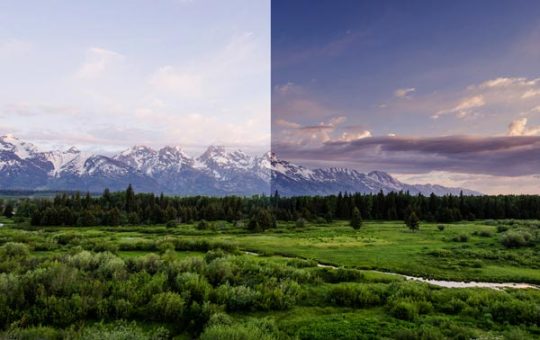
If you’ve ever had to take a photograph on a bright sunny day, chances are pretty high that you would have lost detail, possibly in the shadows or in the highlights, perhaps even both. This is not an exposure problem on your part, it’s more likely a limitation of the dynamic range of your camera – almost all cameras will come up against this problem at some time.
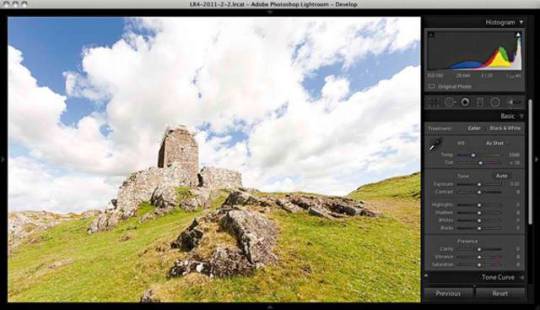
Notice the sky is lacking in detail. It is over exposed – outside of the range of the camera. There are actually two dynamic ranges you need to think about. One is the dynamic range of the subject, the second is the dynamic range of your camera. The dynamic range of the subject is a measure of the range of light intensities from the shadows to the highlights. In low light conditions the dynamic range (that is the difference between the darkest and the latest part of the subject) is quite small. On a bright sunny day that range is much higher and is often outside the range of the camera. Different cameras and different sensors will have bigger or smaller dynamic ranges. As long as the dynamic range of the subject doesn’t exceed the dynamic range of your camera you will be able to get a perfectly exposed photograph.
If the subject dynamic range is bigger than the cameras dynamic range and one part of your subject will be either under or over exposed. You can easily tell if the subject’s dynamic range exceeds that of your camera by using the histogram on your rear screen.
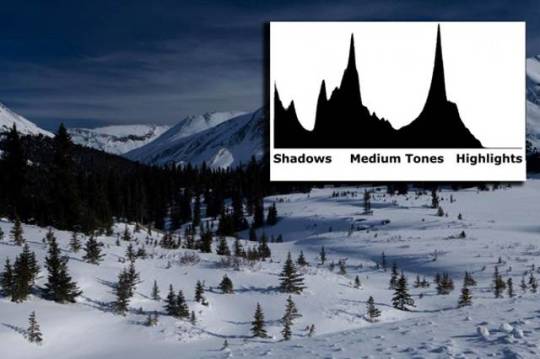
The histogram shows the range of subject brightness starting with black on the left going to white on the right. The width of the histogram chart represents the dynamic range of your camera sensor.
If the histogram fits inside of the histogram display area then the dynamic range of the subject is inside that of your camera and everything is good. If the histogram is clipped at either end then the subject range is too wide. Try changing your camera exposure and watch the histogram move left or right and see if you can fit the histogram inside of the display.
On the histogram shown you can see you can see the shadow area is outside of the sensor’s ability to register. The signal is “clipped” with no details being recorded. The left side of the histogram is crammed up tight against the edge, showing lack of detail.
On the right of the histogram there is still room – the photographer could open up the iris (or use a slower shutter speed) and get more detail in the shadow area without sacrificing detail in the highlights.
Be careful not to over expose the highlights!
A blown out highlight looks terrible whereas a shadow lacking detail is acceptable.
If the subject’s dynamic range is too big and will not fit in histogram and then you need to choose where you will lose information. Ninety-nine percent of the time a photograph that is exposed so the highlights have full detail and the shadows just go black with no detail is a much better option and gives a much more pleasing photograph than one where there is full detail in the shadow but where the highlights are completely burned out.
The almost golden rule is “expose for the highlights,” that is, expose so the highlights are not clipped. Shadows by definition are dark and it is hard to see detail there, so, if you have to loose a portion of the dynamic range it is almost always preferable to loose in the shadows.
There are ways to lift shadows – consider using a fill in flash or a reflector to lighten up those areas if they are close enough to the flashgun that it would have an effect.
Another option – and always a good piece of equipment to have in your camera kit – is to use a graduated neutral density (ND) filter.
BIT DEPTH
Bit depth is one of the most fundamental and important parameters you're likely to come across in photography and videography. This great video will give you a quick introduction to what bit depth is and why it matters to your work.
Coming to you from ZY Productions, this quick and informative video will teach you about bit depth. Bit depth is essentially how much information your camera can store in each color channel for each pixel. For example, a camera with 8-bit color depth can store a string of eight 0s and 1s in each color channel for each pixel. Since there are two possibilities (0 or 1) in each slot and eight slots overall per channel, that equates to 2^8=256 values per channel. Since there are three overall channels, this equates to (2^8)^3=16,777,216 total colors. Altogether, higher bit depths are better, as they create finer gradations, and this results in smoother transitions between tones. As the video notes, the standard JPEG is 8-bit, whereas raw files are typically 12-bit or 14-bit files. This is by far one of the best reasons to shoot in raw; the massive gain in information you get from those extra bits creates much more post-processing latitude. Check out the video above for more.
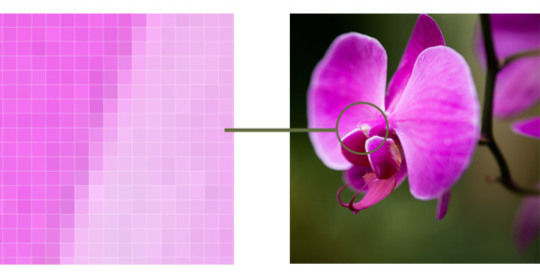
there is some lin with video about bit depth:
https://youtu.be/Z-0hszXbYD0
DIGITAL NOISE
Digital camera image noise
"Image noise" is the digital equivalent of film grain for analogue cameras. Alternatively, one can think of it as analogous to the subtle background hiss you may hear from your audio system at full volume. For digital images, this noise appears as random speckles on an otherwise smooth surface and can significantly degrade image quality. Although noise often detracts from an image, it is sometimes desirable since it can add an old-fashioned, grainy look which is reminiscent of early film. Some noise can also increase the apparent sharpness of an image. Noise increases with the sensitivity setting in the camera, length of the exposure, temperature, and even varies amongst different camera models.
CONCEPT: SIGNAL TO NOISE RATIO
Some degree of noise is always present in any electronic device that transmits or receives a "signal." For televisions this signal is the broadcast data transmitted over cable or received at the antenna; for digital cameras, the signal is the light which hits the camera sensor. Even though noise is unavoidable, it can become so small relative to the signal that it appears to be nonexistent. The signal to noise ratio (SNR) is a useful and universal way of comparing the relative amounts of signal and noise for any electronic system; high ratios will have very little visible noise whereas the opposite is true for low ratios. The sequence of images below show a camera producing a very noisy picture of the word "signal" against a smooth background. The resulting image is shown along with an enlarged 3-D representation depicting the signal above the background noise.

The image above has a sufficiently high SNR to clearly separate the image information from background noise. A low SNR would produce an image where the "signal" and noise are more comparable and thus harder to discern from one another.

ERMINOLOGY: ISO SPEED
A camera's "ISO setting" or "ISO speed" is a standard which describes its absolute sensitivity to light. ISO settings are usually listed as factors of 2, such as ISO 50, ISO 100 and ISO 200 and can have a wide range of values. Higher numbers represent greater sensitivity and the ratio of two ISO numbers represents their relative sensitivity, meaning a photo at ISO 200 will take half as long to reach the same level of exposure as one taken at ISO 100 (all other settings being equal). ISO speed is analogous to ASA speed for different films, however a single digital camera can capture images at several different ISO speeds. This is accomplished by amplifying the image signal in the camera, however this also amplifies noise and so higher ISO speeds will produce progressively more noise.
TYPES OF NOISE
Digital cameras produce three common types of noise: random noise, "fixed pattern" noise, and banding noise. The three qualitative examples below show pronounced and isolating cases for each type of noise against an ordinarily smooth grey background.
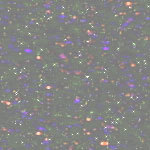
Fixed Pattern Noise Long Exposure Low ISO Speed
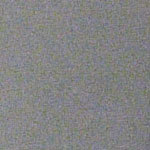
Random Noise Short Exposure High ISO Speed

Banding Noise Susceptible Camera Brightened Shadows
2 notes
·
View notes
Text
A Complete Guide to Buying Fujifilm Cameras in 2022
GFX or X series?
Fujifilm cameras are pretty incredible. When the X series hit the market a bit over a decade ago, everyone immediately fell in love. And as time as passed, the systems have aged like fine wine. We’ve reviewed pretty much every Fujifilm camera on the market. And so we’re diving into the cameras you’ll want and providing a bit of an intro to the system. (more…)
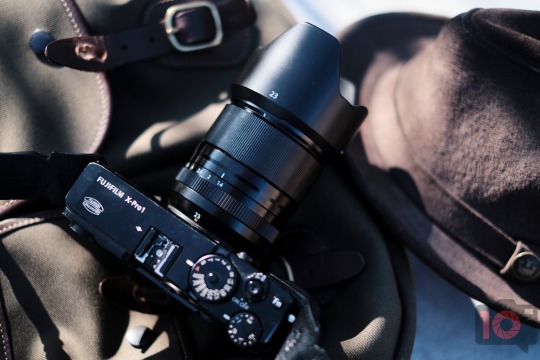
View On WordPress
0 notes
Text
The Best Digital Cameras to Buy

Every photographer needs a reliable camera, whether they’re an amateur or a professional. It goes without saying that the camera they use is the most important aspect of what they do. If you have a camera that doesn’t meet all your requirements, you’re not going to get the pictures you need and what’s the use in that for a photographer? It’s like Lewis Hamilton entering a race with a Fiat 500 instead of his Mercedes-AMG One.
So, if you want to be a champion of photography, it’s time you invest in a top-quality digital camera. One of the best online camera shops is Wilkinson Cameras – they stock all the top brands, offer part exchanges and their experts are always on-hand to help.
I’m going to run through some of the digital cameras on their website that could suit your requirements and be ideal for you. Remember though; they’re constantly updating their stock and might have something even better, so be sure to visit their site and see for yourself. Here we go:
1. Sony Cybershot RX1R Mark II Compact Digital Camera
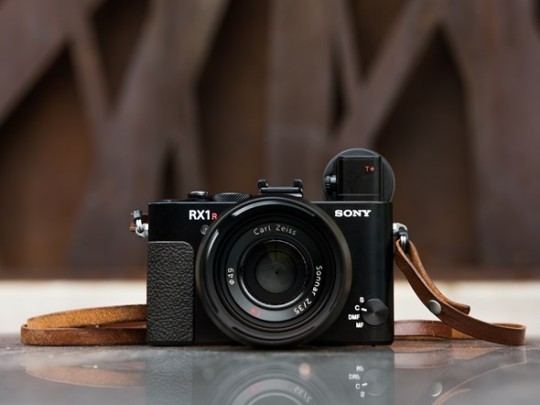
Sony is one of the big players in the photography game, and for good reason too. Their digital cameras are of excellent quality, and this one we’ve picked out is no different. The Sony Cybershot RX1R Mark II is compact but capable with full-frame format compatibility, a large-aperture ZEISS® Sonnar T* 35mm F2 lens, a tiltable LCD screen, and many more features. You’re able to take truly breath-taking pictures. This digital camera is certainly a great piece of equipment to invest in.
2. Nikon D500 Body

Powerful, portable and agile - the Nikon D500 combines the high quality of the Nikon D5 with the flexibility of the DX system. Whatever you’re shooting, whether it’s wildlife or sports, the Nikon D500 will capture the perfect shot. Featuring a 153-point AF system, 10 fps continuous shooting, lightweight DX system, 4K UHD video, SnapBridge support, and much more. Could the D500 be your ideal photography partner?
3. Canon EOS 1D X Mark III Body
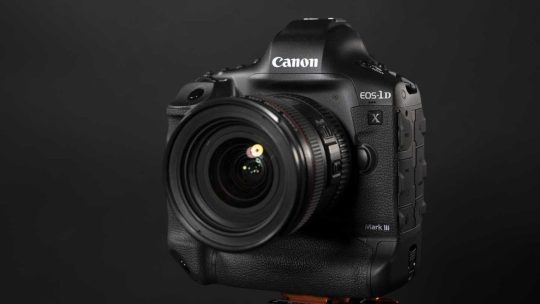
This camera is a little on the pricey side, which is why it was designed for professionals. The Canon EOS 1D X Mark III helps you capture split second moments in time and make them last forever. This digital camera ensures lightning speed when shooting stills and sleek smoothness when capturing video. Designed to be tough, reliable and intuitive, this camera is one of the best out there.
4. Nikon D6 DSLR Camera Body
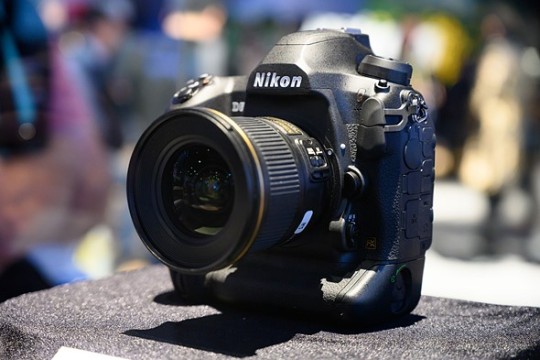
Back to Nikon – this digital camera looks as good as it shoots. Another camera built for professionals, featuring Nikon’s most powerful AF system yet and fast in-camera connections for real-time image transfer, the D6 lets you create and deliver without limitation. Extreme speed, precision and high quality are what comes to mind when you think of the Nikon D6.
5. Fujifilm GFX 100S Body

Last, but certainly not least, the Fujifilm GFX 100S was designed for perfection in image quality, which is exactly what photographers seek. The Fujifilm GFX 100S creates remarkably detailed images that reach further and deeper into scenes to reveal amazing colour fidelity and rich shadow detail. Experience unparalleled colour accuracy and flexibility with this digital camera.
And that was the list of my personal favourite digital cameras to purchase in 2022. You can purchase all of these on the Wilkinson Cameras’ camera shop, along with many other cameras, lenses and accessories.
Enjoy this blog post? Follow me for more!
0 notes
Text
JJC Eyecup Finder Eyepiece EF-XT L Replacement for Fuji X-T4 X-T3 X-T2 XT4 XT3 XT2 XT1 X-H1 XH1 GFX100S GFX100 GFX 50S GFX50S II Camera Viewfinder Eyeshade Replaces Fuji Eye Cup EF-XTS EF-XTM EF-XTL
JJC Eyecup Finder Eyepiece EF-XT L Replacement for Fuji X-T4 X-T3 X-T2 XT4 XT3 XT2 XT1 X-H1 XH1 GFX100S GFX100 GFX 50S GFX50S II Camera Viewfinder Eyeshade Replaces Fuji Eye Cup EF-XTS EF-XTM EF-XTL
Compatible with Fujifilm GFX 100S GFX100 GFX50S GFX50S II X-H1 X-T4 X-T3 X-T2 X-T1 camera Replaces Fujifilm EC-XT L finder eyecup Dome-shaped eyecup effectively shields light, making it easier to see the viewfinder Made from soft and durable silicone + high quality ABS Can be installed to the camera easily and securely [amz_corss_sell asin=”B06X9S5LS8″]
View On WordPress
1 note
·
View note
Text
Fujifilm GFX 50S II Street Photography POV
Fujifilm GFX 50S II Street Photography POV
This fourth episode of YouTube mini-series in Florence is all about GFX 50S II Street Photography. As I mentioned before, this is not as fast and powerful as the GFX 100S. But the new iteration of this camera has a lot more processing power so it is much easier to use outdoors and not miss a moment. I made a video about shooting Street Photography with the previous version of Fujifilm GFX 50S so…
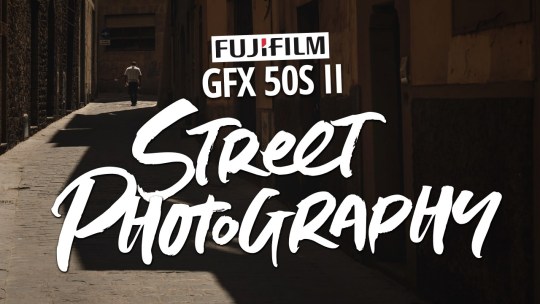
View On WordPress
0 notes